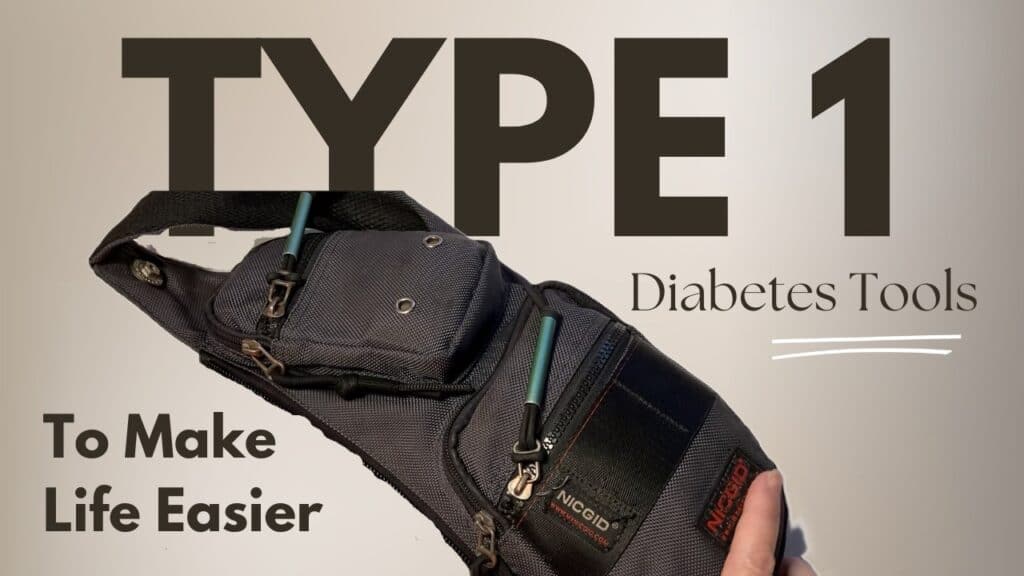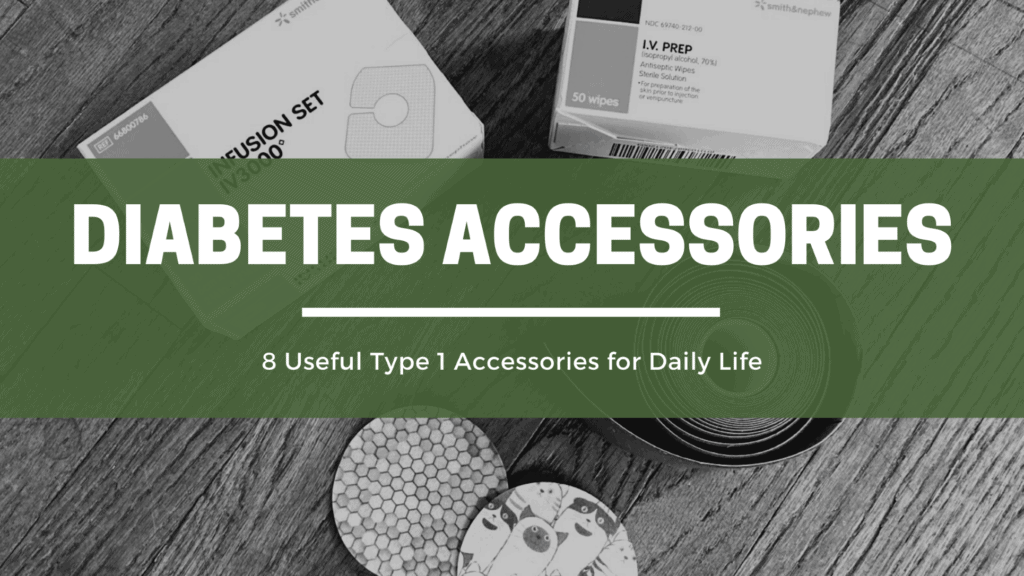What tools can make a Type 1 diabetic life easier?
Type 1 Diabetes accessories can make daily life simpler and more secure with just a few well thought out specifics. Type 1 Diabetes management is a far cry from just one generation ago. We are blessed with faster acting insulin, smart pumps, and continuous glucose monitors with predictive trending skills.
There are quite a few studies going on set to make cutting edge history on the treatment of Type 1 Diabetes that we watch closely in hopes that the next discovery will translate to market use. Until then, we continue on our journeys one day at a time getting more and more exeperienced as we go along in different circumstances on the management of this horrible disease. We are now past the “deer in headlights” phase that we wrote about earlier and are onto growth and independence.
This summer, we conquered some pretty huge challenges in our outlook: a water theme park in the summer and a teen youth group lake retreat for 2 days, slip and slides, high intensity water tubing, snorkeling, sledding, hiking, and duct tape weapons battles. These are huge milestones and we are totally excited to have done it! If you don’t have Type 1 Diabetes, you may be thinking that these are not biggies and you wouldn’t give them a second thought. BUT, if you have Type 1 Diabetes, here are a few things we have to think about as well as others.
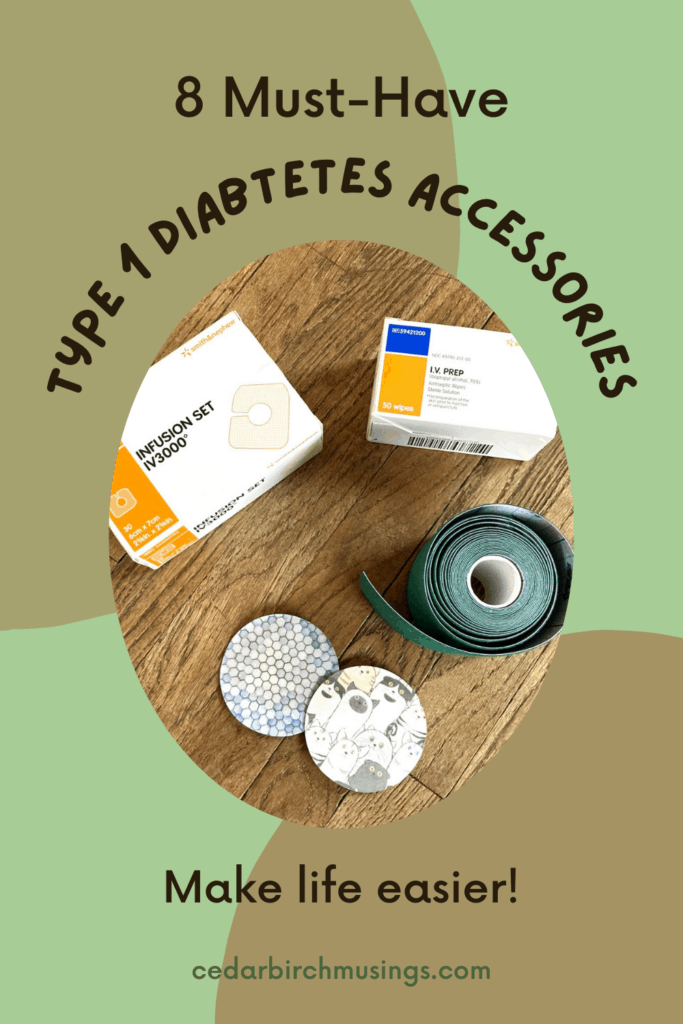
Prepping in the mind of a Type 1 Diabetic Family
- Can my CGM sensor handle the water slides?
- WIll my CGM and pump be secure on high speed roller coasters or bungee drops?
- Where do I put my pump when I go down the water slides that will be secure?
- Where on my body should my infusion set be located for water slides or tubing?
- How can I keep my backup insulin cool?
- How do I carry around emergency sugar for lows?
- How to manage the buddy system with a youth group?
- What supplies do I take in the park with me?
- What if something gets ripped out?
- As a parent, what happens if our child goes too low right in the middle of the park and you are not with them?
- The intense struggle in my mind about what is necessary and what can my teen take over?
- What if my sensor gets a direct hit by a re-enactment battle weapon?
- Where do I put my pump when I am in a snow suit?
- And many more…
Our Most Frequently Used Type 1 Diabetes Accessories:
There will always be changes in gear and tools throughout a Type 1 Diabetic’s life but sometimes the simplest things are the most important. We’ve put together a few that don’t seem very grand but we use very frequently throughout the year in a variety of circumstances.
We use a Medtronic pump which is waterproof which enables us to use it while doing snorkeling, kayaking, etc. Your list will be different if you are using a different, non-waterproof pump. I’ve listed a few links to similar accessories but you can find them through multiple different online sources.
This post contains Amazon affiliate links, which means I receive a small commission to put in the school fund kitty, at no extra cost to you, if you make a purchase using links provided. Please see my disclosure page for more details.
Runner’s Belt
A thin-lined runner’s belt has been our hands-down most used extra item throughout the year. While the belt clip on the back of the pump is pretty strong, it’s just a slip on clip to the waistband of your pants and wouldn’t be so secure on light shorts in athletic scenerio. Putting our pump in this runner’s belt has been a more secure method to use for a variety of circumstances.
Our teen uses it everytime he is in the lake while kayaking, snorkeling, sailing, or jumping in. We have a warantee for replacement pumps in the event of the pump failing or getting damaged but not if we don’t have a pump to return. Having the pump fall off and sink to the bottom of the lake would be an extremely expensive event. Even to the point of hiring a diver to recover it.
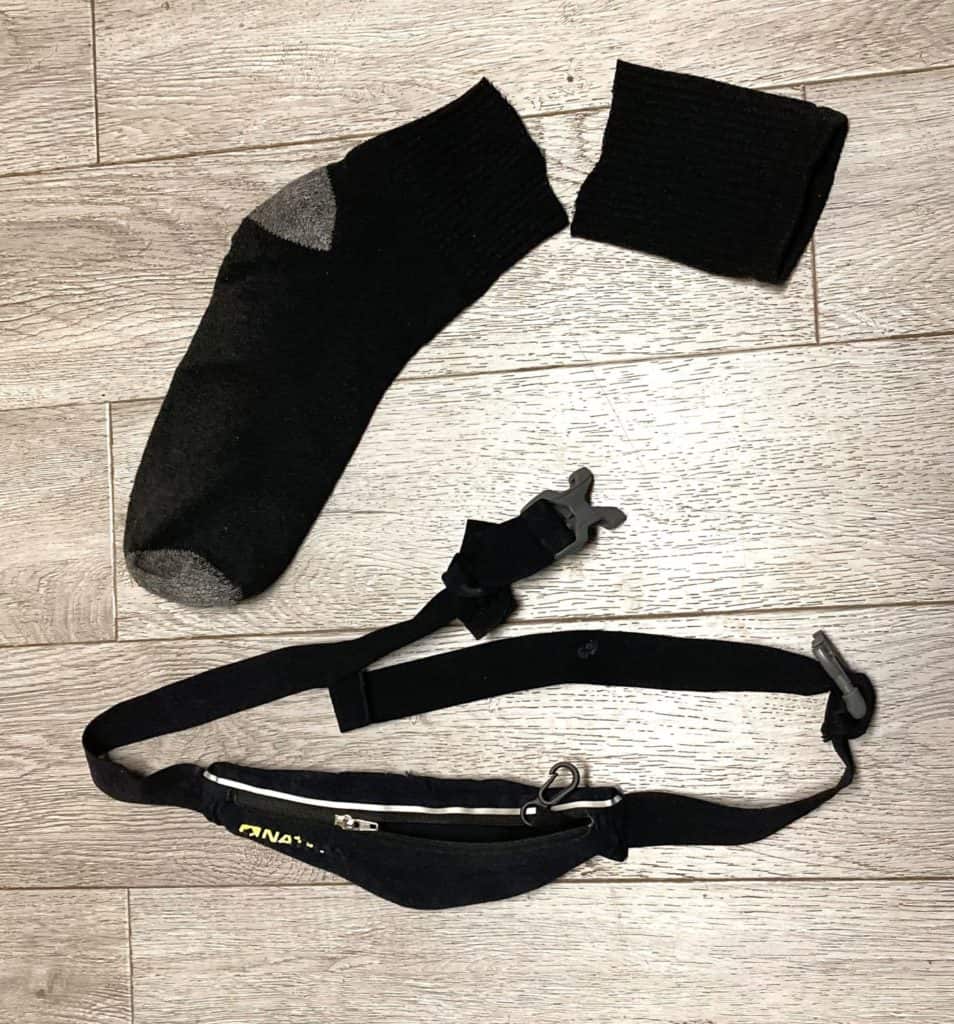
An Arm Band
At the most crude and efficient, we use a cut off sock tube to slide over the CGM on the upper arm to secure it and protect it from direct scraping during boat tubing and most specifically during water slides. We don’t keep the pump on while on water slides or water tubing. To keep the CGM sensor from being ripped out, this has been the most simple and useful item next to the runner’s belt. Simple CGM armbands can be found on Amazon and Etsy.
Cross-body Kit Bag
There are a few supplies that always need to accompany a Type 1 Diabetic but carrying them around is somewhat clumsy and in the way for our teen guy. What would be the right fit for an adventurous and on the go guy? Our goal was to find something that could be unobtrusively carried around and light enough to not be a hindrance.
At first we used an insulated lunch tote but that gets mixed up in the shuffle with others in the group. Too easy to misplace and forget. We opted to use a small cross-body adventure looking kit bag. That has met with approval from our teen and is a part of every time we leave the house. Inside, he can carry his glucagon emergency kit, extra glucose (candy), medical alert card, extra stickers, and batteries. If we are traveling into town and cannot access his backup insulin within an hour, we would bring his extra insulated bag with insulin and extra sets.
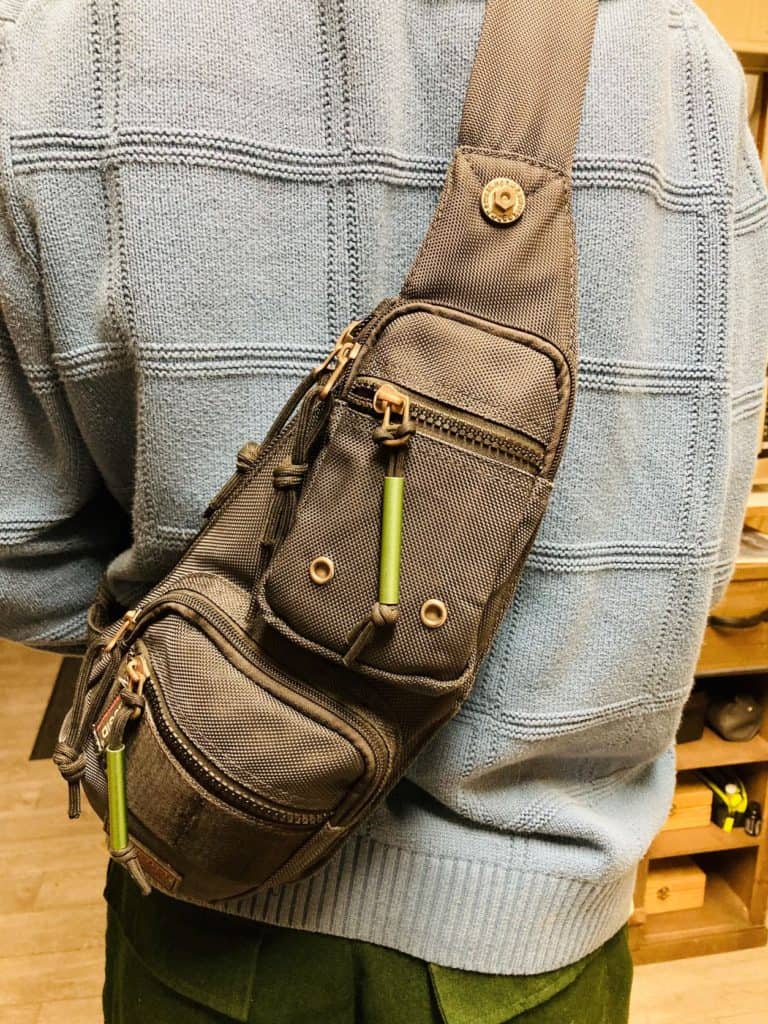
Insulated Storage Bag
There are activities or day travels that require an extra group of supplies. I was gifted this bag from a friend who had a 31Bags tote and storage bag set and enjoys them. We throw this bag in our lake cooler, lunch tote cooler, or backpack when the need arises. Inside I can fit an extra infusion set, extra batteries and stickers, extra back up syringes, and a back up vile of insulin that we currently use to fill our reservoir for the pump.
It’s home “parking spot” is in the station by his kit so we can grab it on the go if needed. Putting it in the lunch cooler keeps the insulin from overheating. If we were to be traveling on a plane or traveling for long periods of time in hot weather, we would use a Frio ice pack or an insulated insulin carrier.
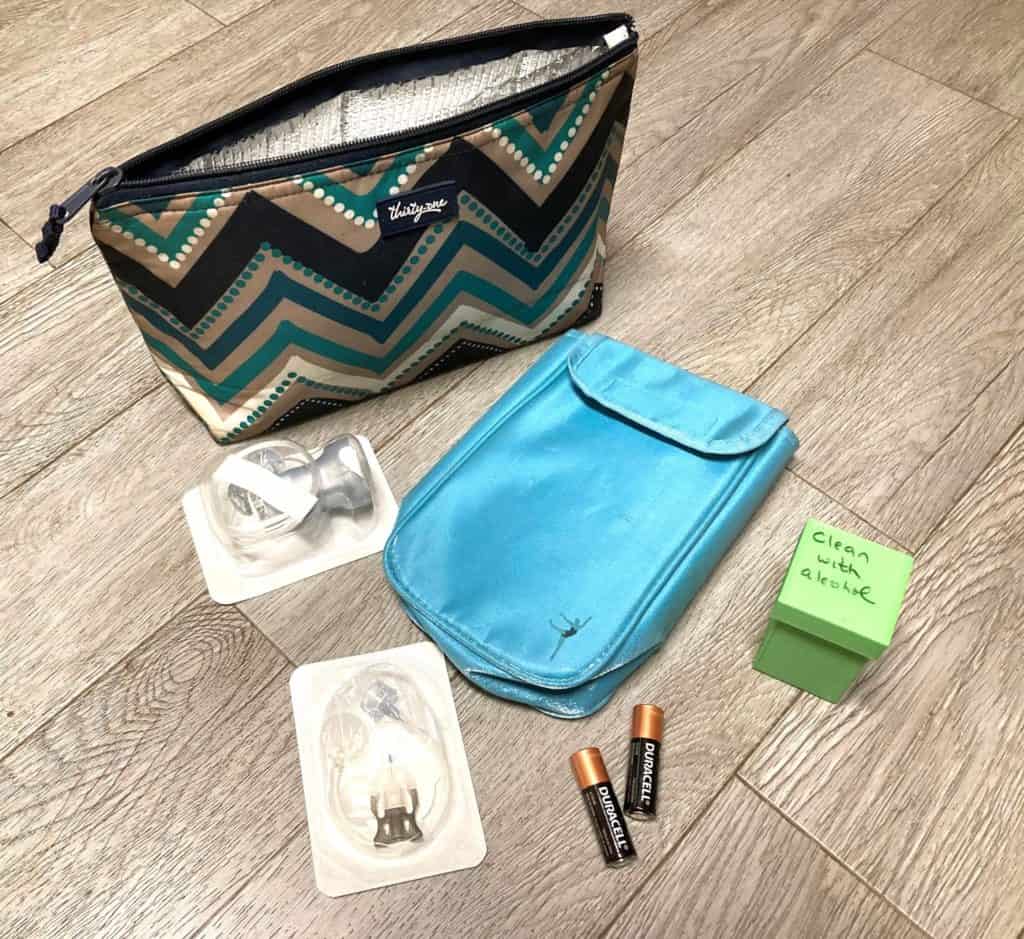
IV 3000, IV Prep Wipes, and Grif Grips
IV 3000 in the C-shape is absolutely necessary for keeping the infusion set in and not getting ripped out every time we do any action. We use one on the infusion set in the front of the abdomen and layer 2 over the infusion set when the infusion set is located on the low back. It has kept the set from coming out during the night also.
IV Prep wipes are a mixture of rubbing alcohol and a sticky residue to help the infusion set adhere better. We just use it to prep wipe the set location of the skin before inserting the infusion set. Then we run the same wipe over the IV 3000 sticker after it’s been applied around the infusion set.
These stickers we order from Medtronic directly or Amazon (although I haven’t seen the IV 3000 c-shape on Amazon lately). Check with your pump or CGM supplier also.
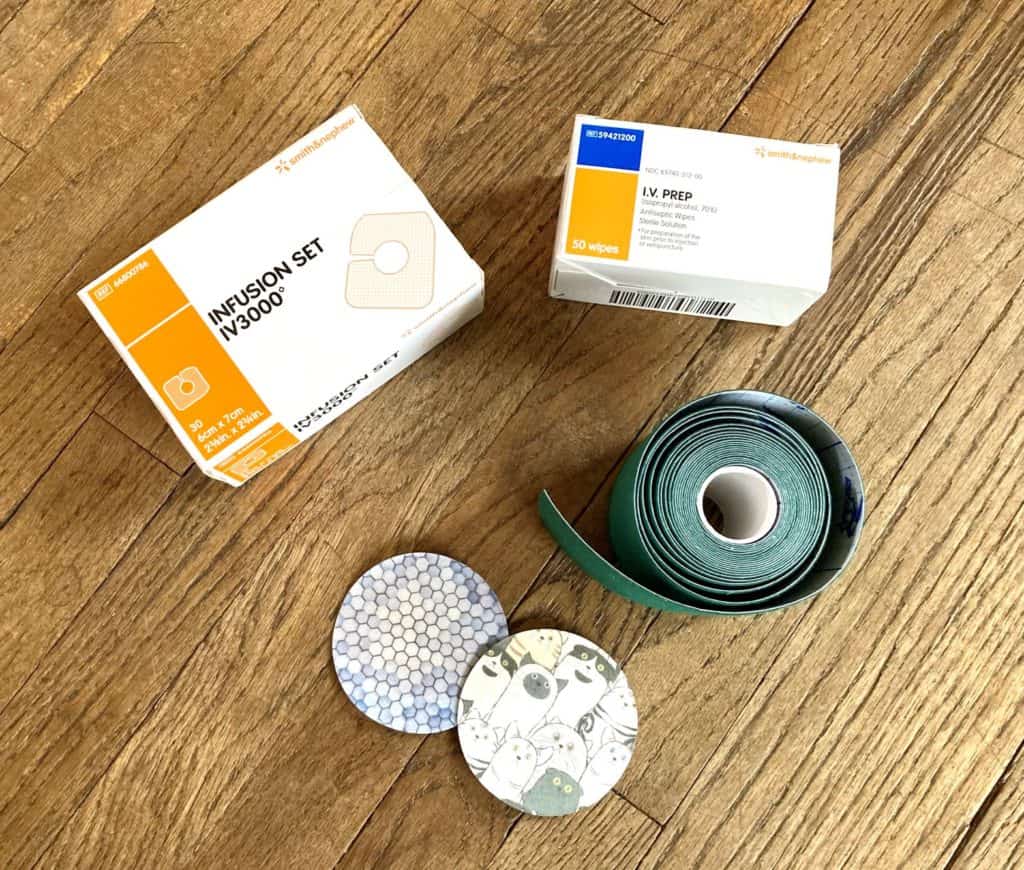
Grif Grips has several options for stickers to place over the CGM sensor to keep it in place. We found that the most economical is the roll of tape that we usually get and occasionally splurge on precut printed designes. We prefer the Power-X or Extreme adhesive formula to keep it on better for our lifestyle. If you use the cut-as-you-go rolls, it helps to round the edges of your cut patch with your scissors to keep them from rolling and curling.
Hard Shell Insulin Bottle / Syringe Containers
There quite a few options for a hard shell inulin bottle container out there but my son was able to print one on his 3D printer. If you have access to a 3D printer, there are plenty of free patterns on Thingiverse. For times when we need to travel with extra backup syringes, I put the syringes in a hard sided eyeglass container. Works very well to keep them from getting cracked and broken. You can find a hard shell container on Amazon or other resources that will carry the insulin bottle and a few syringes as well as mini ice packs.
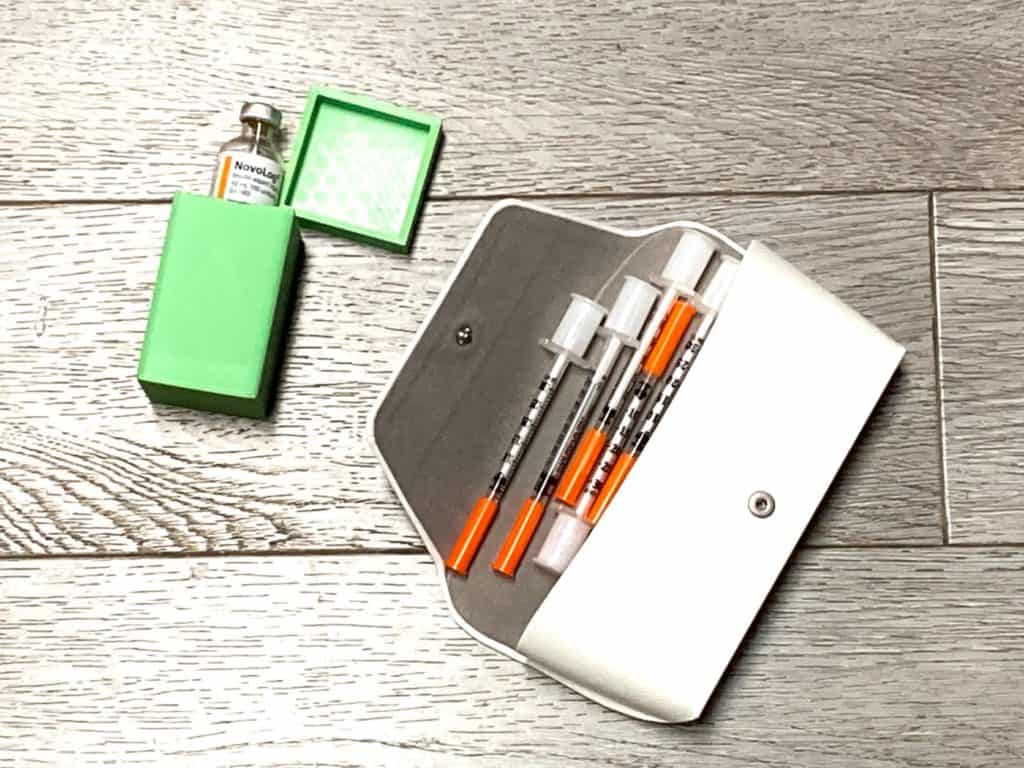
If you want to see the travel case we use, you can watch our review of it here:
